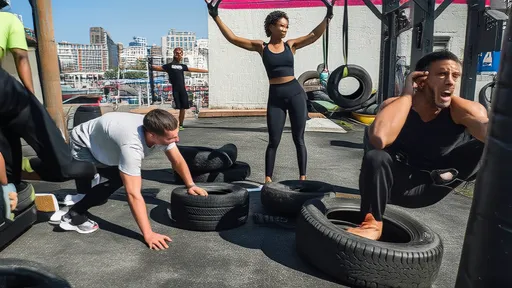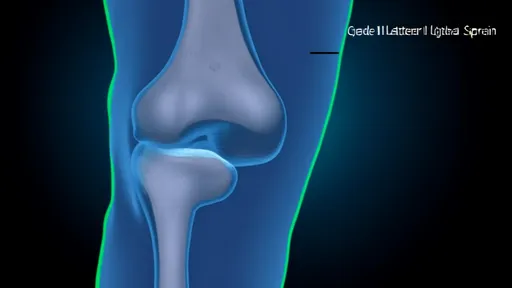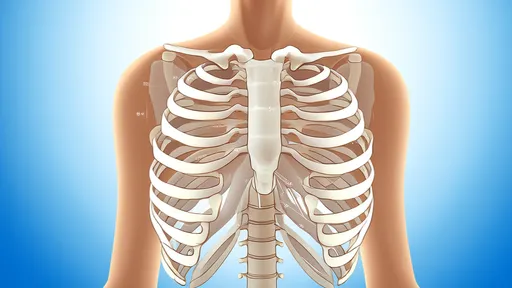Walking is often touted as one of the simplest and most effective forms of exercise, accessible to almost everyone regardless of fitness level. However, as the trend of hitting extreme step counts—such as 30,000 steps a day—gains popularity, concerns about joint wear and tear have emerged. While moderate walking is beneficial, pushing the body to such extremes may come at a cost, particularly for the knees, hips, and ankles. This raises an important question: how much is too much when it comes to daily steps?
The human body is designed for movement, but it also has its limits. Joints, particularly weight-bearing ones like the knees, are cushioned by cartilage that absorbs shock and reduces friction. Over time, repetitive stress can wear down this cartilage, leading to conditions like osteoarthritis. For most people, walking 10,000 steps a day is a manageable goal that promotes cardiovascular health without overburdening the joints. However, tripling that number introduces a level of repetitive impact that the body may not be equipped to handle long-term.
The mechanics of joint stress play a significant role in understanding why excessive walking can be problematic. With each step, the knee joint bears a force equivalent to roughly 1.5 times the body’s weight. For someone weighing 70 kilograms, that’s 105 kilograms of pressure per step. Multiply that by 30,000 steps, and the cumulative load becomes staggering. While the body can adapt to increased activity, there’s a threshold beyond which the joints can’t recover quickly enough, leading to accelerated wear.
Another factor to consider is individual variability. Not everyone’s joints are created equal. Genetics, previous injuries, muscle strength, and even walking technique influence how much stress the joints can withstand. Someone with strong quadriceps and glutes may distribute the load more efficiently, while a person with weak muscles or poor posture might place undue stress on their knees. Age also plays a role—cartilage becomes less resilient over time, making older adults more susceptible to joint damage from high-impact activities.
The surfaces on which we walk further compound the issue. Pavement and concrete, common in urban environments, offer little shock absorption compared to grass or dirt trails. Walking 30,000 steps on hard surfaces daily amplifies the impact on joints, increasing the risk of microtrauma to the cartilage. Even wearing the best cushioned shoes may not fully mitigate the effects of such relentless pounding.
Recovery and adaptation are critical yet often overlooked aspects of high-step-count routines. The body needs time to repair the microscopic damage caused by intense activity. Without adequate rest, inflammation can build up, leading to chronic pain and stiffness. Unlike muscles, which have a robust blood supply and heal relatively quickly, cartilage lacks direct blood flow, making its recovery slower and less efficient. This is why gradual progression is key—jumping from 10,000 to 30,000 steps overnight is a recipe for trouble.
Some fitness enthusiasts argue that the body adapts to increased demands, and to an extent, this is true. Bones, muscles, and connective tissues do strengthen in response to stress—a principle known as Wolff’s Law. However, adaptation takes time, and the joints have a narrower window for safe adaptation compared to other tissues. Pushing too hard, too fast can outpace the body’s ability to repair itself, leading to overuse injuries like stress fractures, tendonitis, or bursitis.
It’s also worth noting that nutrition and hydration play pivotal roles in joint health. Cartilage relies on nutrients like collagen, glucosamine, and omega-3 fatty acids to maintain its integrity. Dehydration, on the other hand, can reduce the viscosity of synovial fluid, the natural lubricant in joints, making them more prone to friction and damage. Those attempting extreme step counts must pay close attention to their diet and fluid intake to support their joints.
For those determined to walk 30,000 steps daily, a balanced approach is essential. Incorporating low-impact cross-training activities like swimming or cycling can give the joints a break while maintaining cardiovascular fitness. Strength training, particularly exercises targeting the legs and core, can improve joint stability and distribute forces more evenly. Listening to the body’s signals—such as persistent pain or swelling—is crucial. Discomfort that lasts more than a day or two should not be ignored, as it may indicate underlying damage.
Ultimately, while walking is a fantastic way to stay active, moderation remains key. The allure of hitting an impressive step count shouldn’t overshadow the importance of long-term joint health. For most people, a sustainable routine that balances activity with recovery will yield far greater benefits than chasing extreme numbers. After all, fitness is a marathon, not a sprint—and preserving the body’s ability to move pain-free is the ultimate goal.
The world of fitness is constantly evolving, with new trends emerging from every corner of the globe. While some workouts stand the test of time, others are so peculiar they make you wonder - who thought this was a good idea? From goat yoga to face slapping workouts, humanity's quest for better health has spawned some truly unconventional practices that blur the line between genius and madness.
The fitness world is buzzing with excitement over the latest viral workout trend—Divine Beats Training 2.0. This high-energy program combines pulsating electronic dance music with scientifically optimized movement patterns, creating what enthusiasts call "the first workout that feels like a nightclub experience." Unlike traditional exercise routines, this system uses precisely timed musical drops and bass-heavy beats to trigger explosive physical responses from participants.
In an era where office workers spend increasingly long hours tethered to their desks, a peculiar fitness trend has emerged from Japan that turns mundane stationery into tools for wellness. The "Stationery Workout" movement, particularly its signature "Ruler Balance" technique, has gained surprising traction among white-collar professionals seeking discreet ways to stay active during marathon work sessions. This unconventional approach transforms everyday office supplies into instruments of physical conditioning, blending productivity with subtle exercise.
In the age of social media dominance, fitness influencers have created countless viral workout trends that promise quick results. However, many of these popular movements can cause serious injuries when performed incorrectly or excessively. Medical professionals and physical therapists are increasingly warning about the dangers lurking behind some deceptively simple-looking challenges.
Fitness gaming has taken the world by storm, and Nintendo's Ring Fit Adventure stands out as one of the most innovative entries in this genre. While many players enjoy the game at face value, there's a hidden layer of depth that few explore—the secret intensity settings. These undisclosed options can transform your workout, pushing you beyond the default limits. For those seeking a more challenging experience, unlocking these hidden features can be a game-changer.
The world of pet entertainment has taken a thrilling turn with the rise of obstacle course designs tailored specifically for feline athletes. Cat owners and enthusiasts are increasingly embracing the concept of creating dynamic, engaging, and challenging courses that cater to their pets' natural instincts. These obstacle courses, often referred to as "cat obstacle course" in certain communities, blend creativity with functionality to provide cats with both physical exercise and mental stimulation.
In today's fast-paced world where stress has become an inevitable part of daily life, people are constantly seeking unconventional yet effective methods to alleviate tension. One such surprising but increasingly popular technique involves the use of ordinary bubble wrap - that ubiquitous packaging material that most of us instinctively pop when it comes our way. What began as an unconscious fidgeting behavior has evolved into structured stress relief training programs harnessing the therapeutic potential of this simple material.
The ancient Chinese literary masterpiece Dream of the Red Chamber is not merely a tale of aristocratic decline—it is also a treasure trove of traditional wellness practices. Among its pages lie subtle references to health-preserving exercises, many of which were practiced by the elite women of the Jia household. Today, these centuries-old movements are being reinterpreted through a modern lens, offering urban dwellers an unexpected bridge between classical literature and contemporary self-care.
The growing popularity of energy drinks has sparked significant interest in their physiological effects, particularly on cardiovascular health. Recent studies utilizing electrocardiogram (ECG) monitoring have begun to unravel the complex relationship between these caffeine-laden beverages and heart function. As millions worldwide consume energy drinks for a quick boost, researchers are investigating whether these products may trigger subtle yet meaningful changes in cardiac rhythm.
Walking is often touted as one of the simplest and most effective forms of exercise, accessible to almost everyone regardless of fitness level. However, as the trend of hitting extreme step counts—such as 30,000 steps a day—gains popularity, concerns about joint wear and tear have emerged. While moderate walking is beneficial, pushing the body to such extremes may come at a cost, particularly for the knees, hips, and ankles. This raises an important question: how much is too much when it comes to daily steps?
The crisp morning air, the quiet streets, and the promise of a fresh start make dawn an irresistible time for runners. Yet beneath the serenity of sunrise jogs lies a hidden danger few anticipate – exercise-induced syncope, particularly when running in a fasted state. This phenomenon isn’t merely about "feeling lightheaded"; it’s a temporary loss of consciousness that can lead to catastrophic falls or accidents. As more people adopt fasting routines or squeeze workouts before breakfast, understanding why this happens and how to respond could mean the difference between a close call and a tragedy.
Ligamentous laxity caused by overstretching is a complex clinical condition that often requires advanced imaging for accurate diagnosis. Magnetic resonance imaging (MRI) has emerged as the gold standard for evaluating ligament integrity, providing unparalleled soft tissue contrast that allows clinicians to assess the degree of ligament injury and subsequent laxity. This imaging modality reveals not only the macroscopic tears but also subtle microstructural changes that occur when ligaments are stretched beyond their physiological limits.
For decades, the idea of converting fat into muscle—or vice versa—has been a topic of fascination in fitness and medical communities. While the concept is often oversimplified in popular media, the biological mechanisms behind this transformation are complex and deeply rooted in cellular metabolism. Understanding how the body regulates the interplay between adipose tissue and muscle mass requires delving into the biochemical pathways that govern energy storage and utilization.
The medical community has long grappled with the complexities of localized cryogenic burns, a unique injury pattern that occurs when skin and underlying tissues are exposed to extreme cold. Unlike thermal burns which follow more predictable pathways, cryogenic injuries present distinct clinical challenges due to their delayed presentation and progressive tissue damage. Recent multicenter studies have shed new light on the pathophysiology and optimal treatment approaches for these frostbite-like injuries caused by industrial accidents, medical cryotherapy mishaps, and improper handling of liquefied gases.
The medical community has long been fascinated by the intricate relationship between skeletal deformities and their underlying causes. Among these, costal arch deformities, particularly those involving the lower ribs, present a unique challenge for both diagnosis and treatment. Often referred to as "corset rib syndrome" or "lower rib cage deformity," this condition manifests as an abnormal inward curvature of the lower ribs, frequently accompanied by chronic pain and respiratory limitations. The condition's nomenclature stems from its historical association with tight-lacing corsets, though modern cases often arise from congenital factors or trauma.














